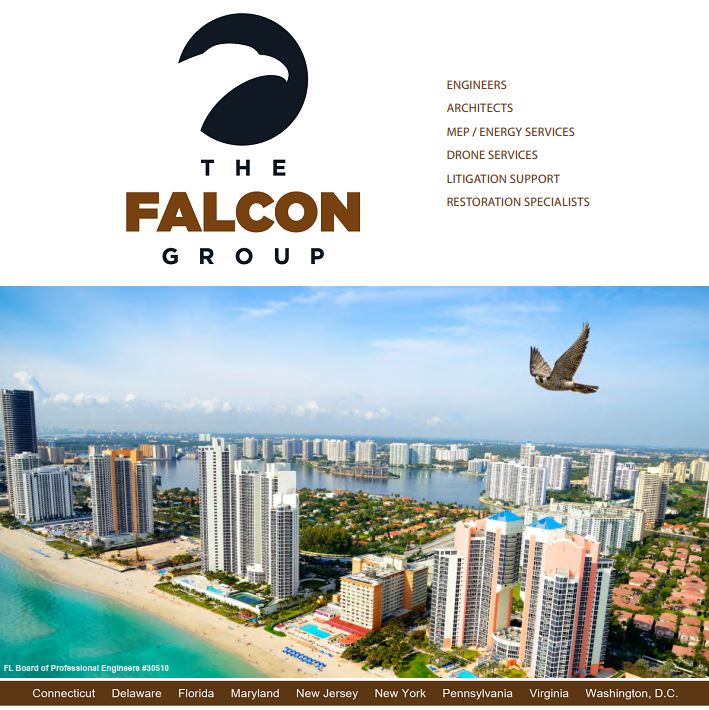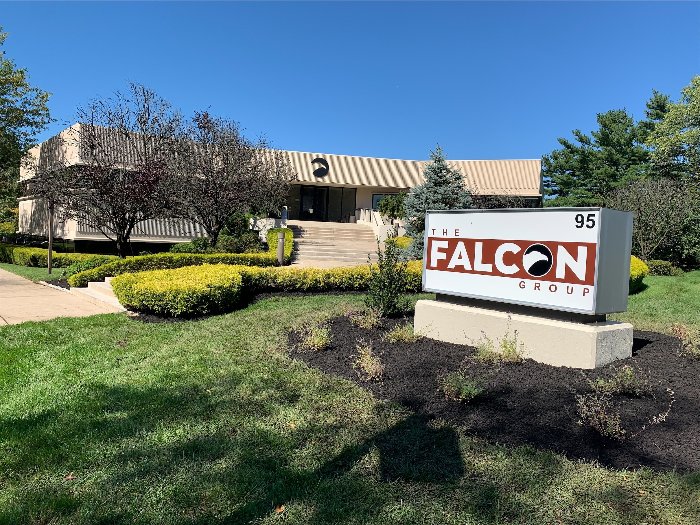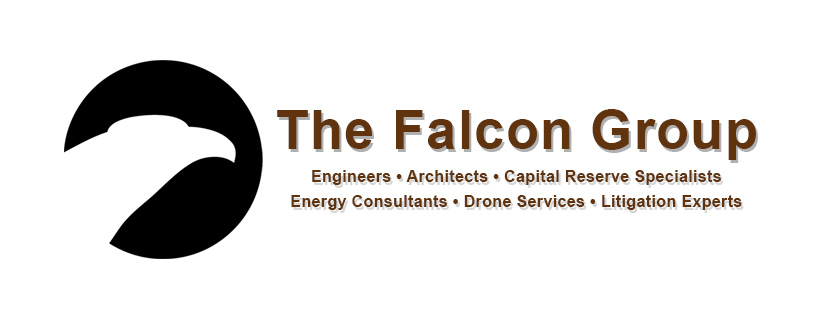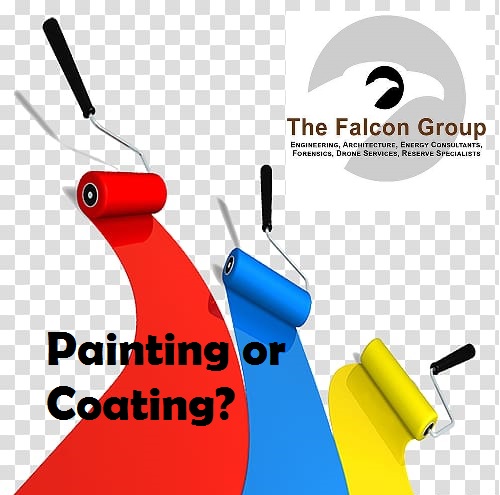Painting or Coating? Basic considerations for long term durability.
by William Pyznar / The Falcon Group
“Painting” your building sounds simple enough. Most would anticipate the most important decision to be selecting which color to paint it. However, a lot of chemistry and physics will play an important role in how that “paint” performs and how long it will be sticking to your building, protecting it and looking good.
 For starters, lets differentiate between “paint” and “coating”. All coatings are paints, but not all paints are coatings. Generally speaking, paint is used for aesthetics, and coatings are used for performance. Coatings are paints that serve a purpose beyond just the aesthetic color and finish. In addition to color and texture, coatings can provide waterproofing, elasticity, breathability, dirt shedding and corrosion prevention properties. With these additional properties typically comes added cost. As such, it is important to make sure you are selecting the correct coating with proper preparation and application techniques to get the best long-lasting performance and return on your investment.
For starters, lets differentiate between “paint” and “coating”. All coatings are paints, but not all paints are coatings. Generally speaking, paint is used for aesthetics, and coatings are used for performance. Coatings are paints that serve a purpose beyond just the aesthetic color and finish. In addition to color and texture, coatings can provide waterproofing, elasticity, breathability, dirt shedding and corrosion prevention properties. With these additional properties typically comes added cost. As such, it is important to make sure you are selecting the correct coating with proper preparation and application techniques to get the best long-lasting performance and return on your investment.
Most coating failures can be attributed one of three issues:
- Improper selection of material
- Improper preparation of the substrate
- Improper application.
Before selecting a coating material and process, first consider the condition of the existing conditions and how the existing coating is performing and the condition of the existing substrate. Also consider what characteristics and results you are looking to achieve. Looking a little deeper into each of the causes of failure. If there is an existing coating and the existing coating has failed, it is crucial to understand why before investing in recoating. If the existing coating is performing, but you are looking to recoat for aesthetics, waterproofing or other performance characteristics, it is also imperative to understand the existing coating to be able to select the proper material, preparation and application of the new coating.
Selecting the new Coating: Selecting the new coating will be governed by desired performance characteristics and chemistry. You need to determine which performance characteristics you need such as breathability, elasticity, waterproofing, corrosion resistance and dirt shedding. You then need to consider what materials you are going over. The new coating should be compatible with the existing surface chemically and physically.
For example, topcoats should generally be of the same generic type of curing mechanism as undercoats and you don’t want to apply a rigid coating over a flexible base. If it is anticipated that moisture escaping the concrete or wood substrate is a concern you may want to select a breathable material. If crack bridging and movement is a concern, you may want to select an elastic material. If existing layers of paint exist, you don’t want to keep applying layers of coatings so as to reduce the elasticity of the overall coating thickness. Latexes are generally less effected by moisture then oil-based coatings. Oil based coatings are not recommended for direct application on galvanized surfaces because the alkalinity on the galvanized surface will degrade the oil binder causing peeling.
Surface Preparation: Surface preparation is the single most important factor in determining coating durability. Proper preparation removes surface contaminants such as dirt, mildew chalking, salts and rust which can interfere with adhesion of the new coating. Proper preparation will also produce a surface profile that will promote good adhesion. There are varying surface preparation processes that are recommended, which vary with the surface such as existing coating, steel, wood or concrete and the condition of the surface such peeling or chalking coatings, fresh or old concrete, painted or bare wood, oiled or rusting steel, etc. There are dozens of preparation methods from blasting and sanding, washing with soap, chemicals or acid to making repairs of the surface itself. The selected methods are a function of the materials being used, the existing conditions and the environment.
Application: It is important to apply coatings immediately after preparation so as to avoid contamination of the surface. The grace period from preparation to coating will vary greatly with material and environment. For example, freshly blasted steel in a marine environment will start to form a corrosive film almost immediately. Whereas bare wood can be exposed to sunlight for up to two weeks before the sunlight causes photo-degradation of the wood, which must be sanded off to avoid adhesion issues.
Other considerations during the application process include access, weather conditions, including wind, precipitation, temperature and humidity, dust (natural or construction related), and the actual application methods such as brush, roller or spray. Application method will be governed by the type of material and the type and condition of the substrate, as well as the environmental conditions. It is important to achieve the specific millage in the application and the specific dry film thickness.
In summary, once you have selected a color scheme for your project, it is important to understand there is an extensive amount of legwork to fully understand what and how coatings should be applied to your building to get the most out of your investment and to avoid costly defects. A professional consultant with expertise in repairs and coatings can help guide this process and perform some simple field tests to identify the existing material type, moisture concerns and visible conditions to come up with the best long term specification for your investment.
WJP
 The Falcon Group | Engineers, Architects & Reserve Specialists
The Falcon Group | Engineers, Architects & Reserve Specialists
www.falconengineering.com
Miami ph: 305.663.1970 x509 West Palm Beach ph: 561.290.0504
Like this:
Like Loading...
Tags:
Building Maintenance,
Management News
 Engineers • Architects • Drone Services • Capital Reserve Specialists • Energy Consultants • Litigation Experts
Engineers • Architects • Drone Services • Capital Reserve Specialists • Energy Consultants • Litigation Experts




 Clif brings 20+ years of experience in progressive leadership roles, including serving as CFO of a major provider of advanced technology solutions across the federal, state, municipal, commercial, and petrochemical refinery markets, and extensive experience with A/E firms. He has a wide technical accounting foundation with experience in public accounting, US GAAP, controls, reporting, systems, FP&A, corporate development, and treasury and strong penchant for building consensus, creating effective relationships, and negotiation skills.
Clif brings 20+ years of experience in progressive leadership roles, including serving as CFO of a major provider of advanced technology solutions across the federal, state, municipal, commercial, and petrochemical refinery markets, and extensive experience with A/E firms. He has a wide technical accounting foundation with experience in public accounting, US GAAP, controls, reporting, systems, FP&A, corporate development, and treasury and strong penchant for building consensus, creating effective relationships, and negotiation skills.  The Falcon Group
The Falcon Group








 For starters, lets differentiate between “paint” and “coating”. All coatings are paints, but not all paints are coatings. Generally speaking, paint is used for aesthetics, and coatings are used for performance. Coatings are paints that serve a purpose beyond just the aesthetic color and finish. In addition to color and texture, coatings can provide waterproofing, elasticity, breathability, dirt shedding and corrosion prevention properties. With these additional properties typically comes added cost. As such, it is important to make sure you are selecting the correct coating with proper preparation and application techniques to get the best long-lasting performance and return on your investment.
For starters, lets differentiate between “paint” and “coating”. All coatings are paints, but not all paints are coatings. Generally speaking, paint is used for aesthetics, and coatings are used for performance. Coatings are paints that serve a purpose beyond just the aesthetic color and finish. In addition to color and texture, coatings can provide waterproofing, elasticity, breathability, dirt shedding and corrosion prevention properties. With these additional properties typically comes added cost. As such, it is important to make sure you are selecting the correct coating with proper preparation and application techniques to get the best long-lasting performance and return on your investment.
